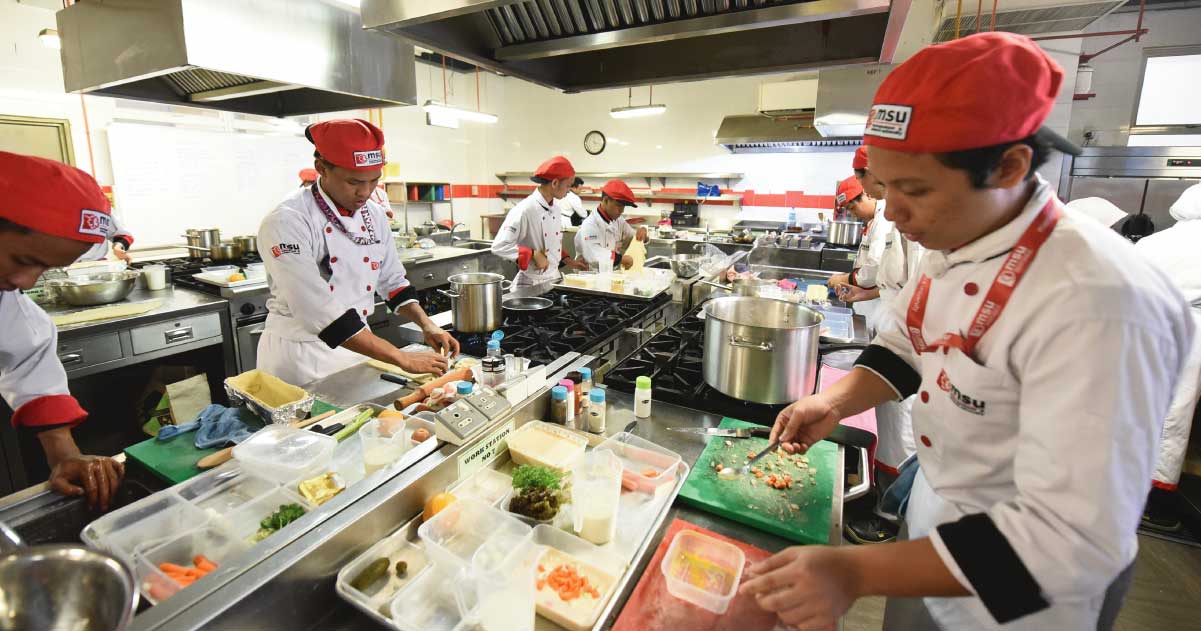

Did you know that sweet orange is twenty-five percent Pomelo and seventy-five percent Mandarin? Or that water infused with cucumber and honeydew has higher hydrating power? From ‘Foods for Healthy Heroes’ to ‘Healthy Foods for Growing Up’, International Chefs Day themes celebrate not only how noble the profession is but also food in all its glory and importance in healthy-eating for health-keeping.
First celebrated in 2004, International Chefs Day was begun by the president of a network of a hundred chefs associations aspiring to bring education, competition, networking, and sustainability to the authority on cuisine. The idea behind the international association of chefs, however, was birthed by a federation of Swiss cooks in 1920, before the WorldChefs association was born in Sorbonne, Paris in 1928.

Food is abundantly celebrated in October, with the sixteenth day of the month being World Food Day. October’s second Thursday is World Chicken Day, whilst its second Friday is World Egg Day. Porridge comes in on the tenth of the month, and pasta is celebrated on the 25th of October.
Healthy eating may be key to a long, happy and healthy life, but how do you choose between health foods? Chef’s choice can be your best bet.

Quinoa or Brown Rice?
Both are gluten-free and magnesium-rich (important for strong bones), thus are good for health; yet quinoa is the complete grain as it has lysine and eight essential amino acids.
Salmon or Tuna?
With seafood, the source and pre-processes are important. Between farmed and wild, for example, the latter is better.
Kale or Bok-Choy?
Both are good sources of fibre as they are leafy, yet kale is more nutritious and full of anti-oxidants. Kale can also be eaten raw, thus its nutrition value is better retained. Bok-choy, instead of blanched or stir-fried, can instead be blended with strong-tasting fruits such as orange or kiwi; to be consumed as a smoothie, retaining its nutritive value.

Coconut Oil or Olive Oil?
A diet high in saturated fat reduces your muscle’s ability to turn the sugar in food into energy, making you feel lethargic. Good fats, i.e., mono- as well as poly-unsaturates, effectively reduce the risk of heart disease, and both are present in olive oil. Virgin coconut oil also has good health benefits, and can be consumed in equal proportions to olive oil.
Flax or Chia?
Both are the creams of the crop for seeds. Each is rich in calcium, phosphorus, fibre, proteins, and fats, yet one is the more flexible. Chia seeds can be eaten whole or softened in water for use as a topping. Flax seeds, however, must be pounded to a powder first; it may then be sprinkled into a drink or enjoyed as a topping.
Atkins or Paleo?
Diet-helping, health-boosting habits according to science include choosing water as well as fibre-rich over sugar-rich for fullness, and also food over liquid for calories.
Fibre prevents over-eating and helps weight loss by keeping you feeling full. Processed foods such as cookies and candy bars are low fibre, thus are relatively more quickly absorbed.

Juice and soda may taste better than water but their calories add up. Juice is also better taken in the fruit it came from, because on its own it is void of fibre and highly concentrated in sugar. If this is not enough to convince dieters out there, know that swapping out sweet drinks has been linked to increased weight loss in a study of over a hundred and seventy women aged 25 to 50.
The Atkins diet is essentially protein-rich, whereas Paleo is all about wholesome, locally sourced nourishment. In the long run, a protein-rich diet may lead to liver-function issues.

Passing it on
The theme from the International Chefs Day 2014 is about embracing the opportunity to make a difference in another person’s life; creating a healthy environment in which food plays a shaping role, and passing on the related skills and knowledge. By feeding the planet (2012), showing culinary ability (2013), raising awareness about healthy eating through Art on a Plate (2016), the chef’s vocation promotes nutrition, health, and wellbeing.
MSU Bachelor in Culinary Arts (Honours)
MSU Bachelor in Patisserie Arts (Honours)
MSU Bachelor in Nutrition (Honours)
MSU Bachelor in Food Service Technology (Honours)
Did you know that sweet orange is twenty-five percent Pomelo and seventy-five percent Mandarin? Or that water infused with cucumber and honeydew has higher hydrating power? From ‘Foods for Healthy Heroes’ to ‘Healthy Foods for Growing Up’, International Chefs Day themes celebrate not only how noble the profession is but also food in all its glory and importance in healthy-eating for health-keeping.
First celebrated in 2004, International Chefs Day was begun by the president of a network of a hundred chefs associations aspiring to bring education, competition, networking, and sustainability to the authority on cuisine. The idea behind the international association of chefs, however, was birthed by a federation of Swiss cooks in 1920, before the WorldChefs association was born in Sorbonne, Paris in 1928.

Food is abundantly celebrated in October, with the sixteenth day of the month being World Food Day. October’s second Thursday is World Chicken Day, whilst its second Friday is World Egg Day. Porridge comes in on the tenth of the month, and pasta is celebrated on the 25th of October.
Healthy eating may be key to a long, happy and healthy life, but how do you choose between health foods? Chef’s choice can be your best bet.

Quinoa or Brown Rice?
Both are gluten-free and magnesium-rich (important for strong bones), thus are good for health; yet quinoa is the complete grain as it has lysine and eight essential amino acids.
Salmon or Tuna?
With seafood, the source and pre-processes are important. Between farmed and wild, for example, the latter is better.
Kale or Bok-Choy?
Both are good sources of fibre as they are leafy, yet kale is more nutritious and full of anti-oxidants. Kale can also be eaten raw, thus its nutrition value is better retained. Bok-choy, instead of blanched or stir-fried, can instead be blended with strong-tasting fruits such as orange or kiwi; to be consumed as a smoothie, retaining its nutritive value.

Coconut Oil or Olive Oil?
A diet high in saturated fat reduces your muscle’s ability to turn the sugar in food into energy, making you feel lethargic. Good fats, i.e., mono- as well as poly-unsaturates, effectively reduce the risk of heart disease, and both are present in olive oil. Virgin coconut oil also has good health benefits, and can be consumed in equal proportions to olive oil.
Flax or Chia?
Both are the creams of the crop for seeds. Each is rich in calcium, phosphorus, fibre, proteins, and fats, yet one is the more flexible. Chia seeds can be eaten whole or softened in water for use as a topping. Flax seeds, however, must be pounded to a powder first; it may then be sprinkled into a drink or enjoyed as a topping.
Atkins or Paleo?
Diet-helping, health-boosting habits according to science include choosing water as well as fibre-rich over sugar-rich for fullness, and also food over liquid for calories.
Fibre prevents over-eating and helps weight loss by keeping you feeling full. Processed foods such as cookies and candy bars are low fibre, thus are relatively more quickly absorbed.

Juice and soda may taste better than water but their calories add up. Juice is also better taken in the fruit it came from, because on its own it is void of fibre and highly concentrated in sugar. If this is not enough to convince dieters out there, know that swapping out sweet drinks has been linked to increased weight loss in a study of over a hundred and seventy women aged 25 to 50.
The Atkins diet is essentially protein-rich, whereas Paleo is all about wholesome, locally sourced nourishment. In the long run, a protein-rich diet may lead to liver-function issues.

Passing it on
The theme from the International Chefs Day 2014 is about embracing the opportunity to make a difference in another person’s life; creating a healthy environment in which food plays a shaping role, and passing on the related skills and knowledge. By feeding the planet (2012), showing culinary ability (2013), raising awareness about healthy eating through Art on a Plate (2016), the chef’s vocation promotes nutrition, health, and wellbeing.
MSU Bachelor in Culinary Arts (Honours)
MSU Bachelor in Patisserie Arts (Honours)
MSU Bachelor in Nutrition (Honours)
MSU Bachelor in Food Service Technology (Honours)